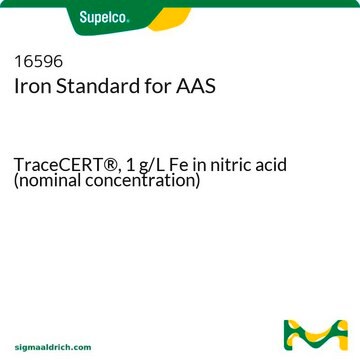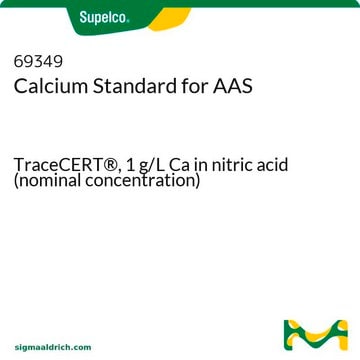All Photos(1)
About This Item
Empirical Formula (Hill Notation):
C6H12O6
CAS Number:
Molecular Weight:
180.16
EC Number:
MDL number:
UNSPSC Code:
12352201
PubChem Substance ID:
Recommended Products
Assay
≥97.0% (HPLC)
optical activity
[α]/D -13.0±1.0°, c = 1 in H2O
storage temp.
−20°C
SMILES string
OC[C@@H]1OC(O)[C@@H](O)[C@@H](O)[C@H]1O
InChI
1S/C6H12O6/c7-1-2-3(8)4(9)5(10)6(11)12-2/h2-11H,1H2/t2-,3-,4-,5-,6?/m0/s1
InChI key
WQZGKKKJIJFFOK-HOWGCPQDSA-N
Application
L-Allose is a pure enantiomer that may be used with other aldose substrates such as D-lyxose, D-mannose, L-ribose, and D-talose to identify, differentiate and characterize aldose isomerase(s) and epimerase(s).
Packaging
Bottomless glass bottle. Contents are inside inserted fused cone.
Other Notes
To gain a comprehensive understanding of our extensive range of Monosaccharides for your research, we encourage you to visit our Carbohydrates Category page.
Storage Class Code
13 - Non Combustible Solids
WGK
WGK 3
Flash Point(F)
Not applicable
Flash Point(C)
Not applicable
Personal Protective Equipment
dust mask type N95 (US), Eyeshields, Gloves
Choose from one of the most recent versions:
Certificates of Analysis (COA)
Lot/Batch Number
Don't see the Right Version?
If you require a particular version, you can look up a specific certificate by the Lot or Batch number.
Already Own This Product?
Find documentation for the products that you have recently purchased in the Document Library.
Eun-Ah Cho et al.
Journal of bacteriology, 189(5), 1655-1663 (2006-12-26)
A newly isolated bacterium, Cohnella laevoribosii RI-39, could grow in a defined medium with L-ribose as the sole carbon source. A 21-kDa protein isomerizing L-ribose to L-ribulose, as well as D-lyxose to D-xylulose, was purified to homogeneity from this bacterium.
Hyun-Jung Kwon et al.
Journal of bioscience and bioengineering, 110(1), 26-31 (2010-06-15)
The specific activity and catalytic efficiency (k(cat)/K(m)) of the recombinant putative protein from Providencia stuartii was the highest for D-lyxose among the aldose substrates, indicating that it is a D-lyxose isomerase. Gel filtration analysis suggested that the native enzyme is
Rae Ung Jeong et al.
Analytical and bioanalytical chemistry, 401(2), 689-698 (2011-06-03)
D-Allose, a rare, naturally occurring monosaccharide, is known to exert anti-proliferative effects on cancer cells. The effects of D-allose on the cellular membranes of hormone-refractory prostate cancer cell line (DU145), hormone-sensitive prostate cancer cell line (LNCaP), and normal prostate epithelial
Yasuhiro Ishihara et al.
Journal of bioscience and bioengineering, 112(6), 638-642 (2011-09-06)
The anti-oxidative activity of the rare sugar D-allose has recently been reported, but the mechanism is largely unclear. In this study, we evaluated the reactive oxygen species (ROS) scavenging activities of D-allose and then examined the effects of D-allose on
Takehiro Nakamura et al.
Neuroscience letters, 487(1), 103-106 (2010-10-13)
The present study investigates the anti-oxidative effects of D-allose on ischemic damage. Rats were subjected to transient middle cerebral artery occlusion (MCAO) for 1 h under pentobarbital anesthesia. D-allose was intravenously infused during occlusion and a further 1 h after
Our team of scientists has experience in all areas of research including Life Science, Material Science, Chemical Synthesis, Chromatography, Analytical and many others.
Contact Technical Service







